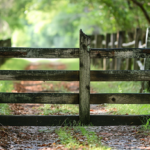Welcome to our guide on how to build a dog ramp. Whether your furry friend needs assistance getting in and out of the car or navigating stairs, this step-by-step tutorial will provide you with the knowledge and skills to construct a safe and sturdy ramp. From selecting the right materials to adding traction for added security, we will walk you through each stage of the process. Get ready to enhance your dog’s mobility and independence with this comprehensive DIY project.
Choosing the Right Materials
When selecting the appropriate materials for constructing a dog ramp, it is crucial to consider the durability and weather resistance of the chosen compound noun, such as pressure-treated lumber or corrosion-resistant metal. These materials provide the necessary strength and longevity required for a ramp that will withstand the wear and tear of regular use by dogs. Pressure-treated lumber is an excellent choice for outdoor ramps as it has been treated to resist rot, decay, and insect damage. It is also cost-effective compared to other options and readily available. Another cost-effective option is using corrosion-resistant metal, such as aluminum or galvanized steel, which can withstand harsh weather conditions and provide a sturdy and reliable ramp. Ultimately, choosing the right materials for a dog ramp ensures longevity and cost-effectiveness while providing a safe and secure access point for our furry friends.
Measuring and Planning
When it comes to building a dog ramp, accurate measurements are crucial for achieving precision and ensuring a proper fit. Taking the time to carefully measure the height, width, and length of the ramp will help you create a safe and functional structure for your furry friend. Additionally, thorough planning is essential for a seamless assembly process, allowing you to anticipate any challenges and make necessary adjustments before starting the construction.
Accurate Measurements for Precision
To ensure precise construction of the dog ramp, it is crucial to obtain accurate measurements of the length, width, and height of the materials. Measuring tools such as a tape measure, ruler, or square can be used to accurately measure the dimensions of the materials needed for the ramp. These tools allow you to ensure that the ramp is the correct size and will fit your dog’s needs. In addition to measuring tools, cutting techniques are also important in creating a well-constructed dog ramp. Using a saw or other cutting tools, you can accurately cut the materials to the desired length and width, ensuring that all pieces fit together properly. Taking the time to obtain accurate measurements and using proper cutting techniques will result in a sturdy and functional dog ramp.
Planning for Seamless Assembly
The successful construction of a dog ramp relies on obtaining accurate measurements and carefully planning for seamless assembly. When considering the planning aspect of building a dog ramp, there are several important factors to take into account. First, you need to assess the specific needs of your dog, such as their size, mobility, and any existing health conditions. This will help determine the ideal ramp height and incline. Additionally, you should consider the materials and design options available to you. Will you use wood or plastic? Will the ramp be foldable or fixed? These decisions will impact the overall functionality and durability of the ramp. Lastly, it is crucial to plan for easy assembly and disassembly, as well as the overall portability of the ramp. By carefully considering these planning considerations and design options, you can ensure a well-constructed dog ramp that meets the specific needs of your furry friend.
Building the Ramp Frame
When building the ramp frame, it is important to choose sturdy materials that can withstand the weight of the dog. The frame should be securely attached to the base to ensure stability and prevent any wobbling or movement while in use. Additionally, it is crucial to ensure that the base is level to provide a safe and comfortable surface for the dog to walk on.
Sturdy Materials for Frame
Using high-quality materials like steel or aluminum ensures that the frame of the dog ramp will be sturdy and long-lasting. When building a dog ramp, durability and weight capacity are crucial factors to consider. The frame of the ramp needs to be able to support the weight of the dog without bending or breaking. Steel and aluminum are known for their strength and durability, making them ideal choices for constructing the frame. These materials can withstand the pressure and weight of the dog, ensuring that the ramp remains sturdy and secure during use. Additionally, steel and aluminum are resistant to rust and corrosion, further enhancing the longevity of the ramp. By using these high-quality materials, dog owners can have peace of mind knowing that their furry companions can safely and comfortably use the ramp.
Secure and Level Base
To ensure a secure and level base, it is important to carefully measure and align the ramp frame components before securing them with screws or bolts. Proper leveling techniques and base construction are crucial for the stability and functionality of a dog ramp. When constructing the base, it is essential to start with a solid foundation. This can be achieved by using a level to ensure that the ground or floor surface is even and stable. Additionally, the ramp frame components should be aligned accurately to ensure that the ramp is level and safe for the dog to use. Taking the time to measure, align, and secure the ramp frame components properly will result in a sturdy and reliable dog ramp that meets the needs of both the pet and its owner.
Adding Traction for Safety
The article discusses the importance of adding traction to the dog ramp for enhanced safety. When it comes to dog ramp maintenance, preventing slippage is crucial to ensure the safety and well-being of our furry friends. Dogs may struggle to maintain their grip on a smooth or slippery surface, leading to accidents or injuries. To address this issue, it is essential to add traction to the dog ramp. There are various ways to achieve this, such as using rubber mats, adhesive grip tape, or even adding carpet or non-slip material to the ramp surface. These methods provide a textured surface that offers better grip and stability for dogs, reducing the risk of slippage and potential accidents. By taking the necessary steps to add traction to the dog ramp, we can ensure a safer and more secure environment for our beloved pets.
Attaching the Ramp to the Desired Surface
Ensuring stability and proper attachment, securely fastening the ramp to the desired surface is crucial for a reliable and safe dog ramp. When installing hardware, it is important to choose the right type of fasteners that are suitable for the material of the surface. For instance, if the ramp is being attached to wood, screws or nails can be used, whereas if it is being attached to concrete or metal, bolts or anchors may be more appropriate. Proper alignment of the ramp with the surface is also essential to ensure that it is level and secure. This can be achieved by using a level or measuring tape to ensure that the ramp is aligned correctly. By following these steps and taking the necessary precautions, the dog ramp can be safely attached to the desired surface, providing a reliable and secure means for dogs to climb or descend.
Testing and Adjusting the Ramp
Several adjustments were made to the ramp to ensure its stability and functionality. After the initial construction, testing techniques were employed to evaluate the ramp’s performance. This involved subjecting the ramp to various weights and observing its response. By doing so, any weaknesses or areas of improvement were identified. One key aspect that required adjustment was the ramp’s angle. Through careful analysis, different angles were tested to determine the optimal incline for the ramp. This was crucial to ensure the safety and ease of use for the dogs using the ramp. Additionally, adjustments were made to the ramp’s surface to enhance traction and prevent slipping. These testing techniques and adjusting angles were vital in creating a reliable and effective dog ramp.
Finishing Touches and Maintenance
To ensure the longevity and functionality of the dog ramp, regular maintenance and attention to finishing touches, such as applying a weather-resistant coating and tightening any loose screws, are essential. Proper maintenance tips for a dog ramp include cleaning it regularly to remove any dirt or debris that may affect its stability or grip. Additionally, inspecting the ramp for any signs of damage or wear and tear is crucial. Weather-resistant coatings, such as sealants or paint, should be applied to protect the ramp from the elements and maintain its durability. It is also important to consider durability when choosing materials for the ramp construction. Opting for sturdy and weather-resistant materials, such as pressure-treated lumber or aluminum, can increase the lifespan of the ramp and ensure its long-term functionality for your furry friend.


